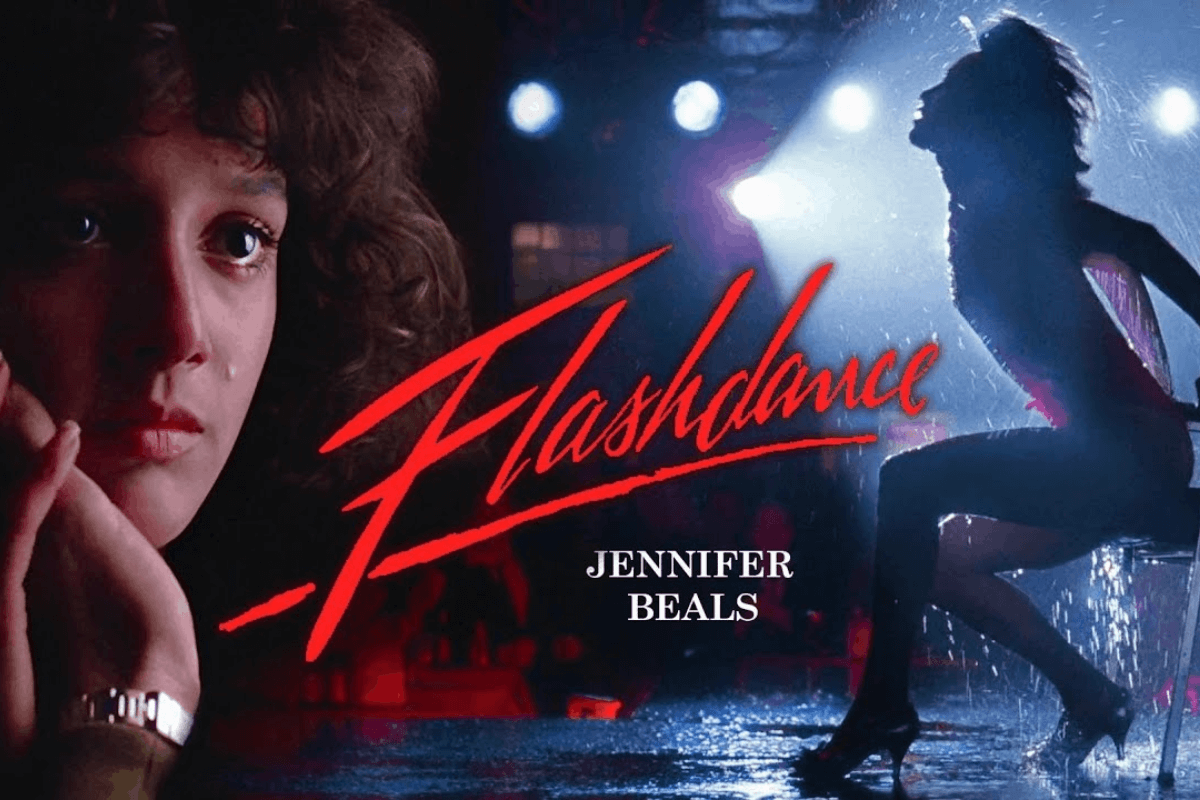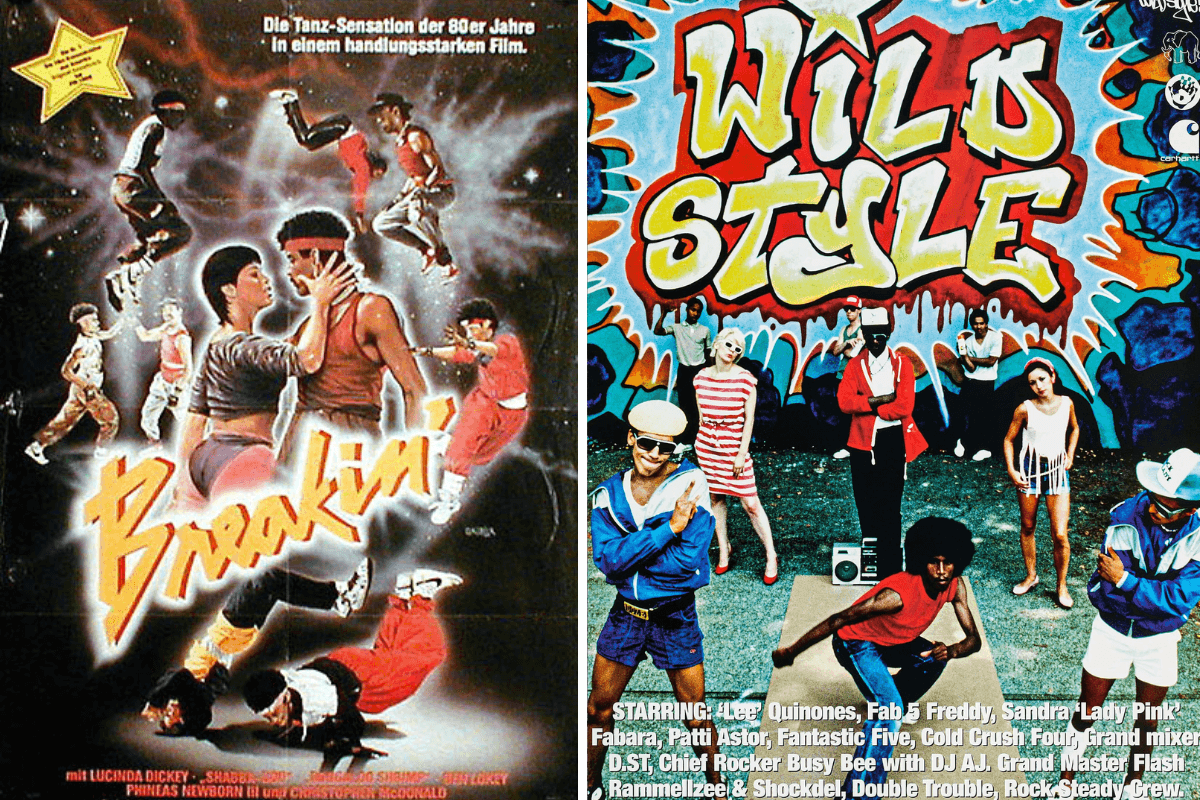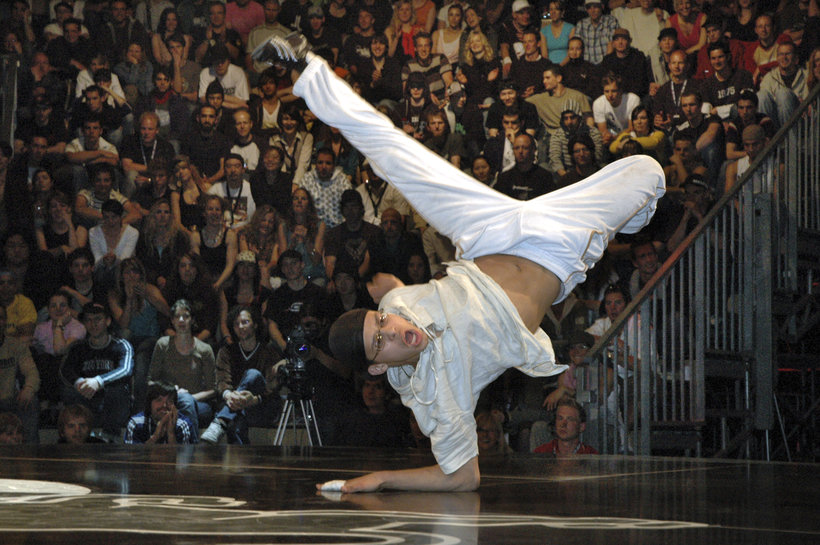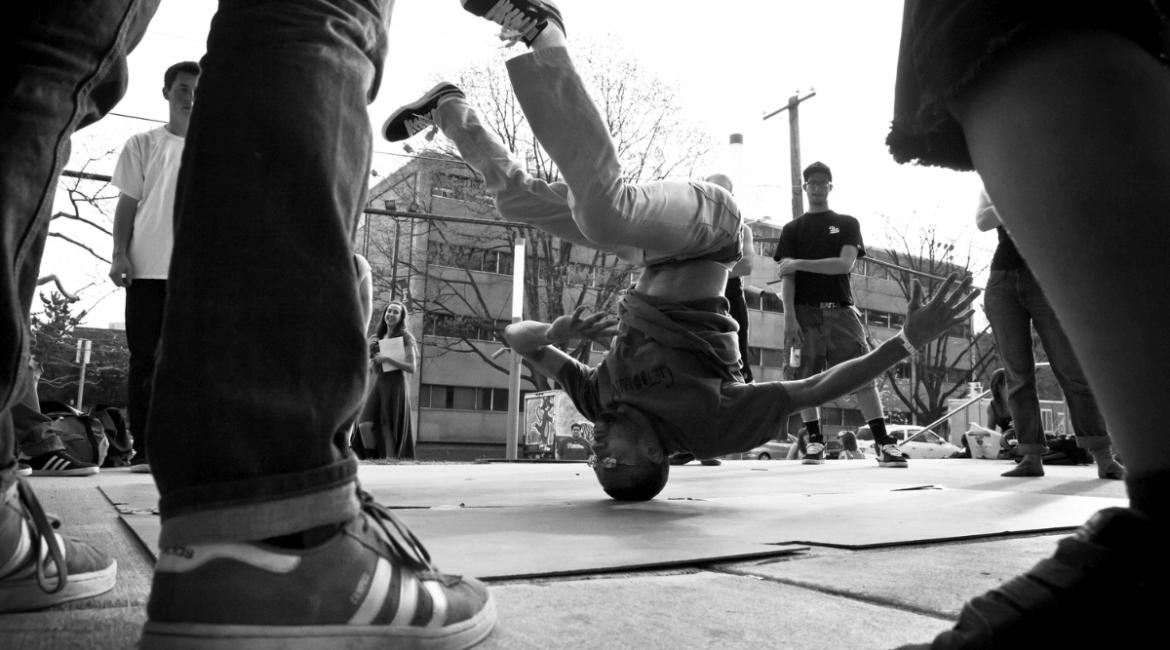Hip-hop culture encompasses a multifaceted tapestry of expressive elements, with its foundation built upon four fundamental pillars. These pillars including rapping, DJing, graffiti, and b-boying—also known as breaking or breakdancing. And breakdancing is the captivating dance performed by B-boys and B-girls showcasing their physical prowess and creativity through a acrobatic moves and rhythmic footwork, adding a kinetic dimension to the overall hip-hop experience.
In this blog today, let’s get to know more some basic information about this cool art form!
What is breakdancing?
Definition of breakdancing
What really is breakdancing? Breakdancing, commonly known as breaking, b-boying, or b-girling, is a dynamic street dance marked by athleticism and spontaneity.
It incorporates elements like:
- Toprock
- Drops
- Downrock
- Power moves
- Freezes
And all of them will be discussed later in this blog!
Breakdancing is competitive, with “break battles” being a popular aspect, showcasing dancers’ individuality and skill. Typically set to hip-hop music, it adapts to various rhythmic tracks. Related dance forms include capoeira and uprock, forming a versatile cultural phenomenon with a global appeal.
Despite its widespread use in pop culture, the term “breakdance” is frequently deemed inaccurate and, at times, offensive. It originated in the 1980s when breakdancing gained public attention. Furthermore, “breakdancing” is occasionally employed to describe dance forms like popping and locking, which also gained prominence in Los Angeles around the same period.
A brief history of breakdancing
The inception of breaking is commonly credited to the influential DJ Kool Herc. Let’s get to know more about this hero!
DJ Kool Herc, whose real name is Clive Campbell, is a Jamaican-American musician and DJ who is often credited as one of the pioneers of hip-hop music. He is often referred to as the “Father of Hip-Hop”. DJ Kool Herc’s innovative techniques and contributions to the hip-hop culture played a crucial role in shaping the genre’s early days.
In the early 1970s, he gave birth to the genre by focusing on the “breaks”—the rhythmic and bass-laden segments of classic funk and soul tunes, notably those by artists like James Brown. During these breaks, dancers exhibited exceptional energy, catching the attention of Kool Herc. In response, he actively encouraged the b-boys during his performances, addressing them through the microphone as he skillfully looped the percussion breaks.
In the latter part of the 1970s, breakdancing had firmly established itself as an integral component of hip-hop culture in New York City, particularly thriving in the Bronx and Manhattan among Black and Puerto Rican youth. The pivotal year of 1977 witnessed the formation of the Rock Steady Crew, a collective that played a significant role in shaping the breakdancing landscape. Founding members contributed to the crew’s emergence and solidification within the burgeoning hip-hop scene, and they include: Richard “Crazy Legs” Colón, Kenneth “Ken Swift” Gabbert, and Santiago “JoJo” Torres

During the early 1980s, breaking catapulted into the mainstream spotlight as the Rock Steady Crew made appearances in several movies, notably:
- Flashdance
- Wild Style
- Breakin’

Who is Rock Steady Crew? Actually, Rock Steady Crew is a pioneering and influential breakdancing (also known as b-boying) and hip-hop collective. Formed in the Bronx, New York, in 1977, the founding members of the Rock Steady Crew include Jojo, Jimmy D, and Jimmy Lee. The crew’s name is also associated with the iconic track “Rockit” by Herbie Hancock, which featured the Rock Steady Crew in its music video and helped bring breakdancing to a wider audience.
This exposure led to a surge in breaking’s popularity worldwide, establishing it as both an art form and a sport. Presently, expansive breaking communities thrive globally, from Paris, France, to Tokyo, Japan. Numerous countries organize annual international breaking competitions, and breaking is poised to make its debut as an Olympic sport in 2024.
5 elements of breakdancing
A comprehensive breakdance set is intricately crafted, built upon a foundation that encompasses five key elements, each contributing to the mesmerizing tapestry of movement and expression within this dynamic dance form. These foundational components serve as the building blocks, allowing breakdancers to showcase their creativity, athleticism, and storytelling abilities with flair and finesse.
Toprock
Toprock involves a series of steps performed while standing. Often serving as the initial foray into the performance, many breakdancers skillfully initiate their sets with Toprock moves. Moreover, these dynamic dancers adeptly weave transitions between Toprock and other elements, strategically interspersing these transitions throughout the set. This strategic placement not only provides a visual respite between standing, footwork, and floorwork but also adds a layer of complexity to the overall choreography.
Downrock
Downrock shifts the focus to ground-level maneuvers. Executed with finesse and creativity, these steps typically involve the breaker supporting themselves using hands or feet on the ground. Within the realm of Downrock, the six-step holds particular prominence, representing one of the most foundational moves. In this intricate sequence, breakers support themselves with their arms, expertly navigating their feet in a basic yet mesmerizing pattern that propels them in a captivating circle.
Drops
Drops is the third crucial element in the lexicon of breakdancing, serve as the seamless transitions bridging the realms of Toprock and Downrock. Within the realm of Drops, breakers wield a canvas of creative possibilities, with the freedom to infuse their performances with simplicity.
B-boys and b-girls showcase their artistic flair by executing drops that can range from gracefully lowering their bodies to the floor to incorporating unique visual elements and moves that add a distinctive touch to their sets.
These transitions become pivotal moments in a breakdance performance, offering both dancers and spectators a seamlessly transitions between standing and ground-level movements.
Power moves
Power moves introduces a dynamic and acrobatic dimension to the breakdance set. Drawing inspiration from gymnastics and martial arts, these moves rely on the breakers’ athleticism and the controlled harnessing of momentum.
Within the rich tapestry of power moves, iconic techniques such as the windmill, swipe, flare, backspin, and headspin showcase the breakers’ physical prowess and ability to manipulate their bodies with precision and grace. Each power move becomes a testament to the breakdancer’s dedication to pushing the boundaries of physical expression within the art form.
Freezes
Freezes as the final foundational element brings a dramatic punctuation to the breakdance set. These are captivating poses that breakers hold for multiple beats, demanding a delicate balance of both strength and artistic finesse.
Often strategically incorporated during potent musical beats or as a concluding statement to a set, freezes are a testament to the breakers’ ability to create arresting visual moments within the fluidity of their movements. As the dancer holds these poses, it leaves a lasting impression on the audience.

In sum, the intricate interplay between Drops, Power Moves, and Freezes adds layers of complexity to the breakdance set, and visually stunning poses!
Major breakdancing competitions
Breaking stands as an exceptionally competitive style of dance and sport, gaining prominence as a captivating form of artistic expression that has become a mainstay in numerous regular competitions. And all b-boys and b-girls showcase their skills in these spirited competitions that push the boundaries of physicality and creativity.
Some of the most widely known competitions are:
Battle of the Year (BOTY)
Battle of the Year (BOTY) is a colossal breaking competition held annually in Germany. Renowned as the largest international breaking competition, BOTY attracts participants from all corners of the globe, creating an electrifying atmosphere where the best breakers compete in a spirited display of athleticism, creativity, and cultural expression.
Chelles Battle Pro
Chelles Battle Pro is an annual competition held in the picturesque town of Chelles, France. This event has solidified its place in the breaking calendar, drawing breakers and enthusiasts alike to witness the mesmerizing battles that unfold. Chelles Battle Pro not only serves as a showcase for the prowess of individual breakers but also contributes to the cultural exchange and appreciation of breaking as an art form.
Red Bull BC One
Red Bull BC One – a globally recognized competition, stands as a pinnacle in the breaking world. This yearly event brings together the top 16 breakers from around the world, creating a high-stakes and intensely competitive environment. The selected breakers represent the epitome of skill and artistry within the breaking community, and their performances in Red Bull BC One are a testament to the evolution and innovation within the art form.
R16 Korea
R16 Korea is one notable breaking competition that has become a staple in the South Korean breaking scene. This annual event, held in South Korea, but moved to Taipei in 2016, stands as a testament to the country’s vibrant breaking culture and serves as a platform for local and international breakers to showcase their skills and compete at the highest level.
Youth Olympics
Breaking’s journey to global recognition reached a historic milestone in 2018 when it was officially inducted as part of the 2018 Youth Olympics in Buenos Aires. This groundbreaking inclusion marked the first time that breaking had been featured in an Olympic competition, signifying a pivotal moment for the art form. The Youth Olympics provided a prestigious stage for young and talented breakers to not only display their athleticism and creativity but also to contribute to the cultural phenomenon with a global reach.
2024 Summer Olympics
Breaking secured a monumental achievement in late 2020 when the International Olympic Committee (IOC) granted its approval for breaking to be featured as an official Olympic sport. Breaking is set to make its debut as an Olympic sport at the 2024 Summer Olympics in Paris, France, marking a historic moment for the breaking community and solidifying its place among the elite disciplines celebrated on the grandest sporting stage.


Leave a reply